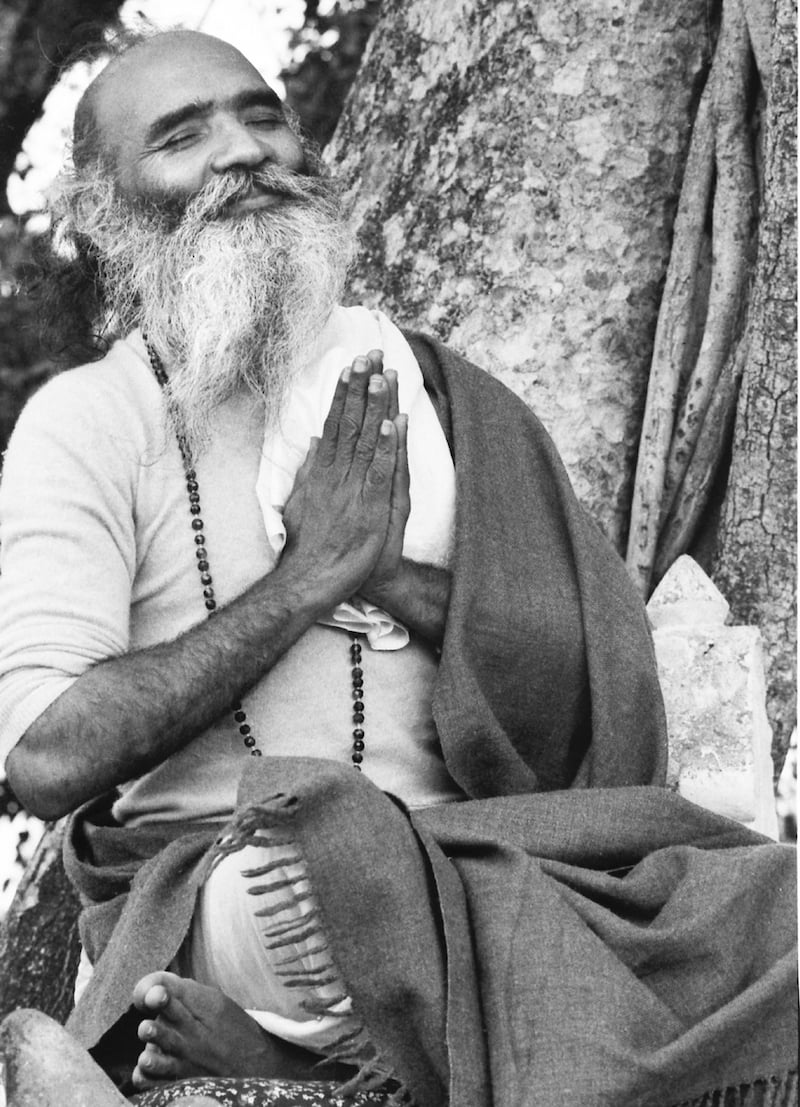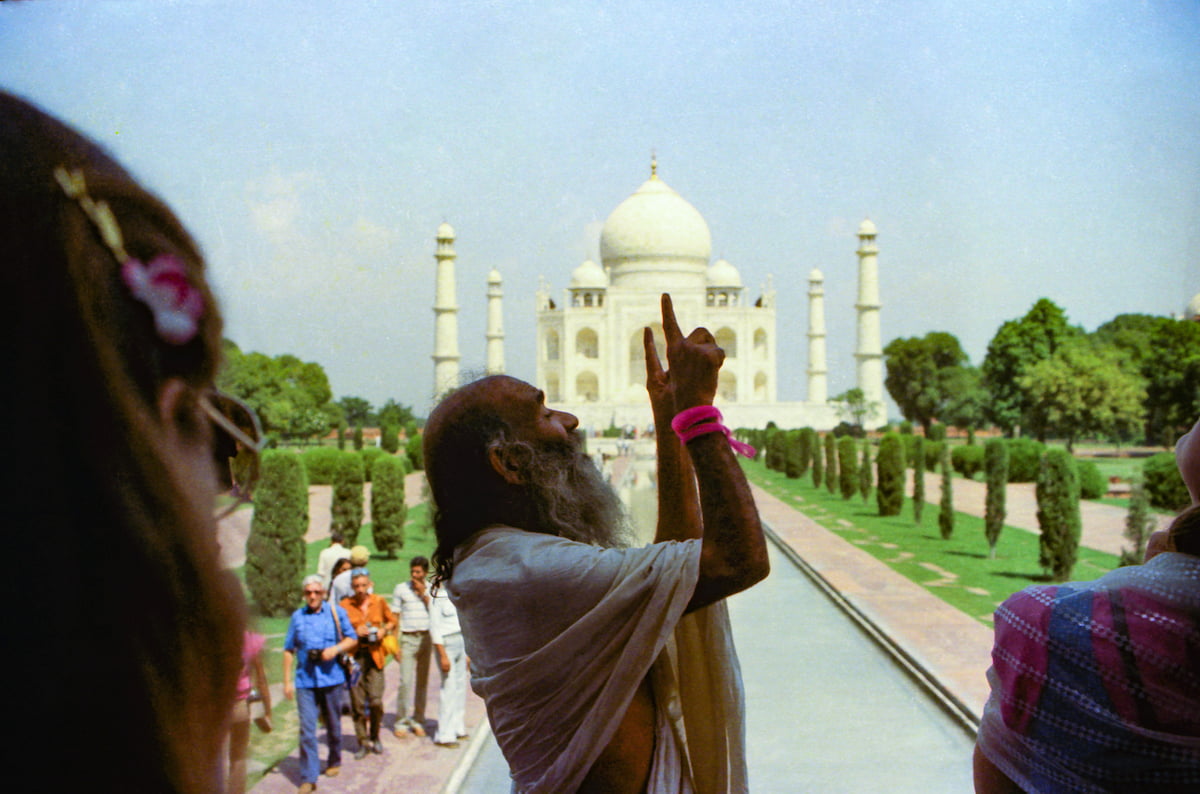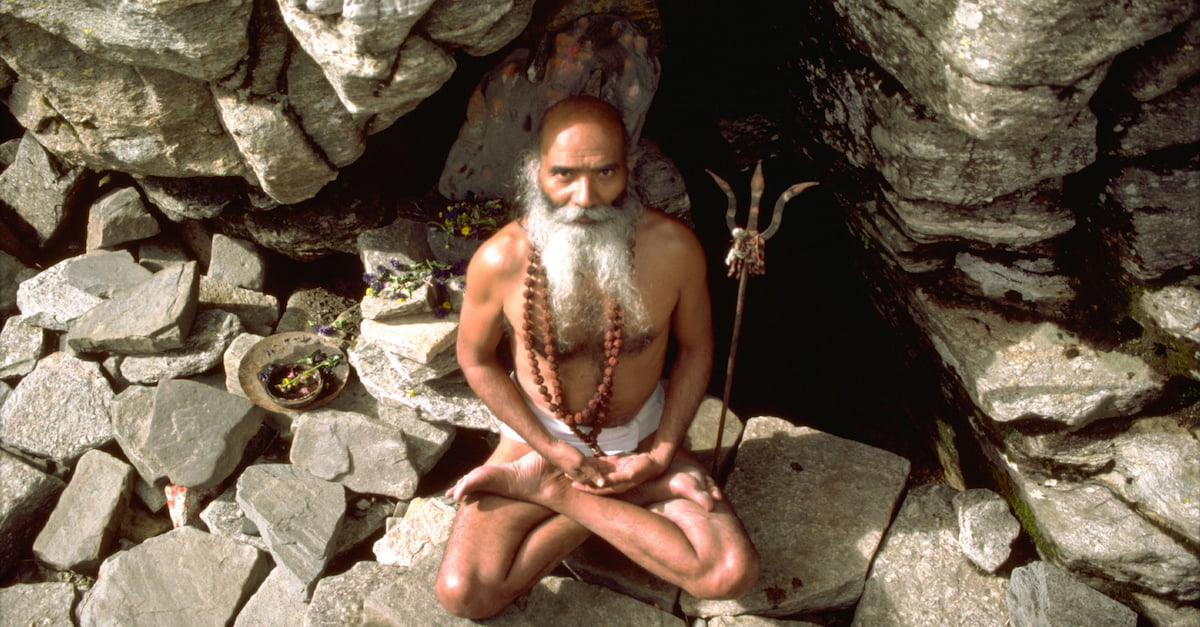Today nobody is coming and nobody is going. Therefore, you have enough time to begin with the practice of meditation—which you wait for, after somebody’s welcome is over or after somebody’s departure is over. Wherever there is no coming and no going, that is also some space.
In time, somebody is always born, somebody is always coming. In time, somebody is always living and somebody is always going. This appearance and disappearance is known as the constantly moving wheel of birth and death—because we human beings are bound to know birth, the birth of the body. When one year passes, then the parents observe their child’s birthday. For the whole year, people did not know on which day the child was born. When picking the child up, friends and relations never ask the child or his parents when he was born. They just see him as he is. But why is it that parents observe the child’s birthday? It is a sanskar, an impression, of a number, which is being laid or pasted on the minds of people. They say, “one year.” Then they have to wait for the second year.
So, “one and two.” Birth and the next birthday have become one and two. A person thinks, “Oh, this is a child”; that is one thought, or one speech. Another thinks, “Oh, whose child is this?” This is a second thought. Everywhere there is one, two, one, two. That is called the sense of duality, which a human being is living. And that is perpetuated and associated with the body, with the birthday. If the form is there but there is no birthday, then it is a form, but the idea of birth is not there; and then, even if the form disappears, the idea of death is not there.
But the human being has been trained in developing the mind, out of the consciousness which is the child. It was one Pure Consciousness, where there was no vikar, no possibility of division. But in that very consciousness, the parents, people, and relations—who are already in the sense of duality—say, in every situation, “I saw” and “I do not see”; “You came” and “You are gone,” or “You are going”; “You have eaten” or “You have not eaten”; “You have taken rest” or “You have not taken rest”; “You are driving” or “You are not driving”; “You are speaking” or “You are not speaking.” In every sphere of the activity of life, a person is developing the sense of two, the sense of duality: “My body is a form, and my body is known by me.” So the body is a form, number one, and the body is known by me, number two. Everywhere there is the sense of duality.
That division, that sense of duality, that “one and two,” does not allow the same Being, who is Pure Consciousness, Pure Existence, to have the sense of oneness, the sense of sameness, or the sense of happiness. So the human being, by birth, is endowed with the power of consciousness which is oneness, but he is trained in the consciousness of two: “You exist, and you are conscious”: “You are growing, because you are not grown up”; “You are beginning to stand up, because you are not able to stand”; “You are learning, because you are not able to understand”; “You are getting a degree, because you do not have a degree”; “You are gaining knowledge, because you are stupid.” All such things are being taught.
So the human being—which means the human mind, because without mind there is no human being—has become two. The mind has the functioning, now, of two: “I am” or “I am not”; “You are” or “You are gone.” And a change in this functioning of mind will not happen in the field of the changing functioning of the mind.
Therefore, you entertain division. Division means fear. Fear is an emotion; it has no substance, like gold, silver, or copper, nor even like skin or wood. Fear. Fear falls in the category of knowledge or ignorance, and its opposite is fearlessness. So if fear is the sense of duality, then fearlessness is the sense of oneness. If division is the sense of duality, then its opposite, the sense of oneness, is non-duality. The sense of death is opposite to birth, and birth is opposite to the sense of death. And what is it that you want? Deathlessness.

Deathlessness is not birthlessness. Deathlessness is where division is not. So oneness is deathlessness. Every human being wants to have the sense of deathlessness, which means he wants to have oneness, or happiness, because deathfulness, or the sense of death, creates problems. One wants deathlessness, which means happiness—no problem.
Involvement is dualistic; uninvolved is oneness. But for a long time, you as a human child do not know what is being taught, what is being spoken of. Yet it has been found that the capacity of a human being is such that he can hear words, and something happens, the meaning comes. He says “flower,” and he sees the flower. When he sees the flower, he does not know what it is; but when he says “flower,” then the form is known. So sound, or language, creates meaning. But the sound is just a spoken word. Meaning is never spoken.
When you say “flower,” there is no meaning in it, but when you show that thing and say its name, then one conceives of the thing as a meaning. Therefore, that which is never a thing—that which is meaning—has become, for you, the meaning of a thing. Wherever you go, you hear words and you know that their meaning is that some thing should be there. Thus, you are missing meaning.
The meaning of life—people ask, “What is the meaning of life?” Meaning is where form is not, where sound is not. But they say, “The meaning of life…give me something with which I should gain some joy!” They want to have meaning. This means there must be something—it does not matter whether it is happiness or unhappiness—but there must be a meaning.
The real meaning is, no sense of duality.
How to reach that sense where there is no duality? In the waking state, there are always words and then meaning. Words speak of a thing, a spoken name and a form. Name and form—yet meaning is missing. But without meaning, name and form cannot even be uttered and seen. What, then, could that meaning be? You say, “knowledge.” So you are seeking knowledge all the time. Why? Because you have no knowledge of Knowledge. You have knowledge only of name and form.
When you meditate, then you are Knowledge. Your Knower is Knowledge, your Seer is Knowledge, that which is being seen is Knowledge. And that is oneness.
We meditate. We close the eyes. And, after hearing me, you have come to know that you are meditating on oneness, on meaning. You are meaning. Your body is a form, your name is a word; but you are the meaning.
The senses cannot get meaning, because they are forms. Therefore, you have to give a pause to the functioning of the senses, and conclude that your Self is someone where names are not and forms are not. Jahaan mera naheen, tera naheen—Where there is no mine (body), no thine (body). What is that? That is Wahi, Wahi, Wahi, Wahi—sameness, oneness, happiness, timeless, birthless, deathless, formless. That is where the name of you is not, but That is meaning, the meaning of you. The name of I is not, but That is meaning.
Meaning is meditation. Meditation has no name, meditation has no form. Why? Meditation is meaning. “Flower” is a name, and the form of a flower with petals is a form. But Knowledge has no name, no form. That is meaning.

Human life is with form and name, always seeking meaning. And this is meaning—that you are now in the space. Space is meaning. Then, health is meaning. Health is not copper, silver, or wood; it is meaning. So life is not wood, tree, flower, or leaf; it is meaning. That is life. So life has a meaning, life is meaning, love is meaning, knowledge is meaning, and that which is there when words are not being used, that is meaning. And now I stop speaking. What is left? Meaning.
This is what the information, teaching, or communication is. Not “am”…is. Is pure, is free, is forever. But your experience is constantly of “I.” The moment you say “I am this body and senses,” it becomes the sense of other. You did not remain this, which is one, ever the same—not one flower or one fruit, but one. So “ness” has been added to it—oneness—because that is abstract. It is not happy or unhappy, it is happiness. Happy will become unhappy, unhappy will become happy; but you, in transcending the sense of otherness, have reached here, where there are no two things, no I and you. This is pure, before your “I” and before the understanding of your “you.”
For the human child with form, a name is given. But this space is nameless. We cannot call it anything, because this is only Is, or Isness. Matter cannot reach it. A conscious being, sentient, insentient, does not reach it. The knowledge of happiness and unhappiness does not reach it. All the forms that the eyes will see, they do not reach it, so it is called untouched, unattached. No action, no performance can reach it, so it is non-performer, non-active, non-doing, non-doer.
Those who love this and live this are not human beings like others. But they are human beings, because all of you are human forms. It is only to the human form, when it has come to know that senses are there, that I say, “For a few minutes, do not use your senses.” And who got the power to hear? This human being. Who has heard, “Let me realize?” Only this, my Self.

This is my Self. This is not a husband or a wife. This is not loss and gain. This is not victory and defeat. This is not north and south. This is not east and west. This is not up and down. This is not deep or shallow. This is not fine or gross. Since this alone is, it is called all-permeating. This alone is, so it is called all-knowing.
Each human form has been this, unborn. And since there is only this, he is born, too. But the moment the child is born, he develops forgetfulness of this. So I am reminding you that you are this. Add this to your body form, which is born, and—since the nature of this is all bliss—for the whole life, as long as time and space exist with you, it will be this. It will be bliss.
Amaram Hum Madhuram Hum. We practise it. Practise means, be this. Not that you say, “I am this.” The moment you say “I am,” the sense of otherness has come. So in teachings, when you hear me—it does not matter whether you call me a teacher—if you hear me, you are only one, out of your two. You say, “I am a person,” or “I am a name”; now pick up only one, not both. Do not pick up “I” and “person,” or “I” and “name”; pick up only “I.” That is the sense of oneness. Or pick up only name, without any association; that will be free, the same I, the sense of oneness.
But the moment the sense of otherness comes, which is seen with the eyes, then comes “my body” and “your body,” “my eyes” and “your eyes.” We have found this. That is why we say, boldly, that now you have the sense of otherness, and it will create birth and death.
So we use all kinds of materials, and whatever knowledge that you know. You know “still” and “non-still,” but you are not interested in non-still. You are interested in one. Those who are interested in both sleep and the waking state will remain with the sense of otherness. They will retain it, and they will not be able to leave it. Therefore, even if you are hearing me and you call it teachings, the teaching is only of one. That one is united, uniting everything, so it is unity. So you can safely express that Swami ji has talked about unity, which is not name and form. “Name and form are added together and then they become one”—this is not the one that I am talking about. No! I am talking about the one which is without any second, without any addition.
Many people, later on, when they open their eyes, will argue, “In what way does this benefit me?” I do not have to explain. This is your experience—pure, free, forever.
Open your eyes.
Your eyes are open, but you are retaining That, because you and That are the same, I and That are the same. That belongs to you, and you belong to That. All other things which the eyes see will change, they will not be there. But while you are young, you can know That. If you become a little older, then you will remain conditioned in your argumentative mind, because immediately the eyes will say, “I see all this! Then how is it that all this can go to That?” Argument. I will say, “That alone is.” Then you will say, “But how about this?” And you will continue.
That is why the first condition for the student is, if you want to listen to me, drop your style of making “two” and then trying to understand. That is why many people do not understand, because they cannot hear when I say, “You are pure.” They immediately get into “I,” one, and “pure,” two. So they think the teacher is saying, “You are two, you and pure.” Whereas I am saying, no, no! The condition is that you should understand two, of course, with the ears, and see my form with the eyes—but pick up pure. That is all.
